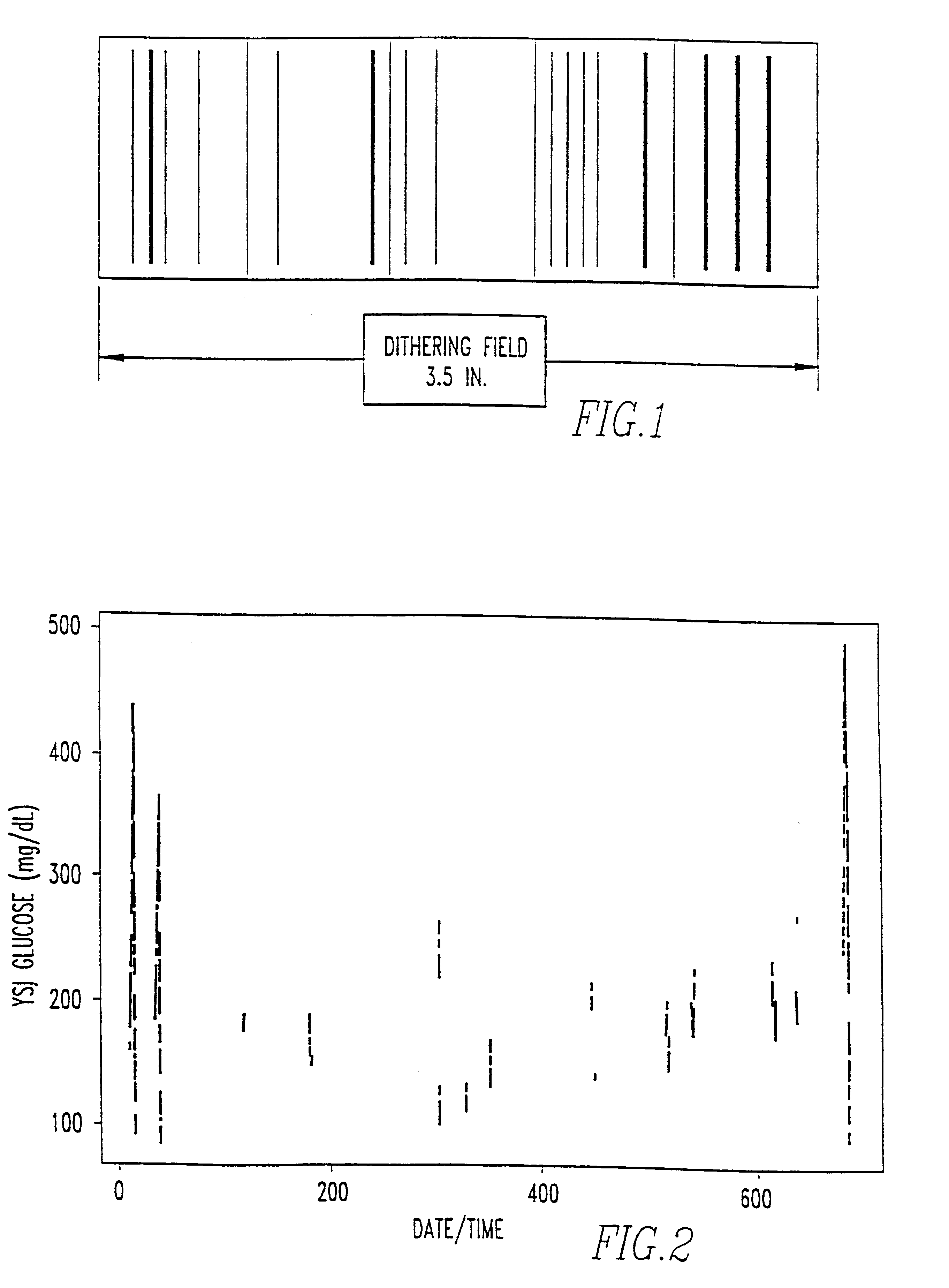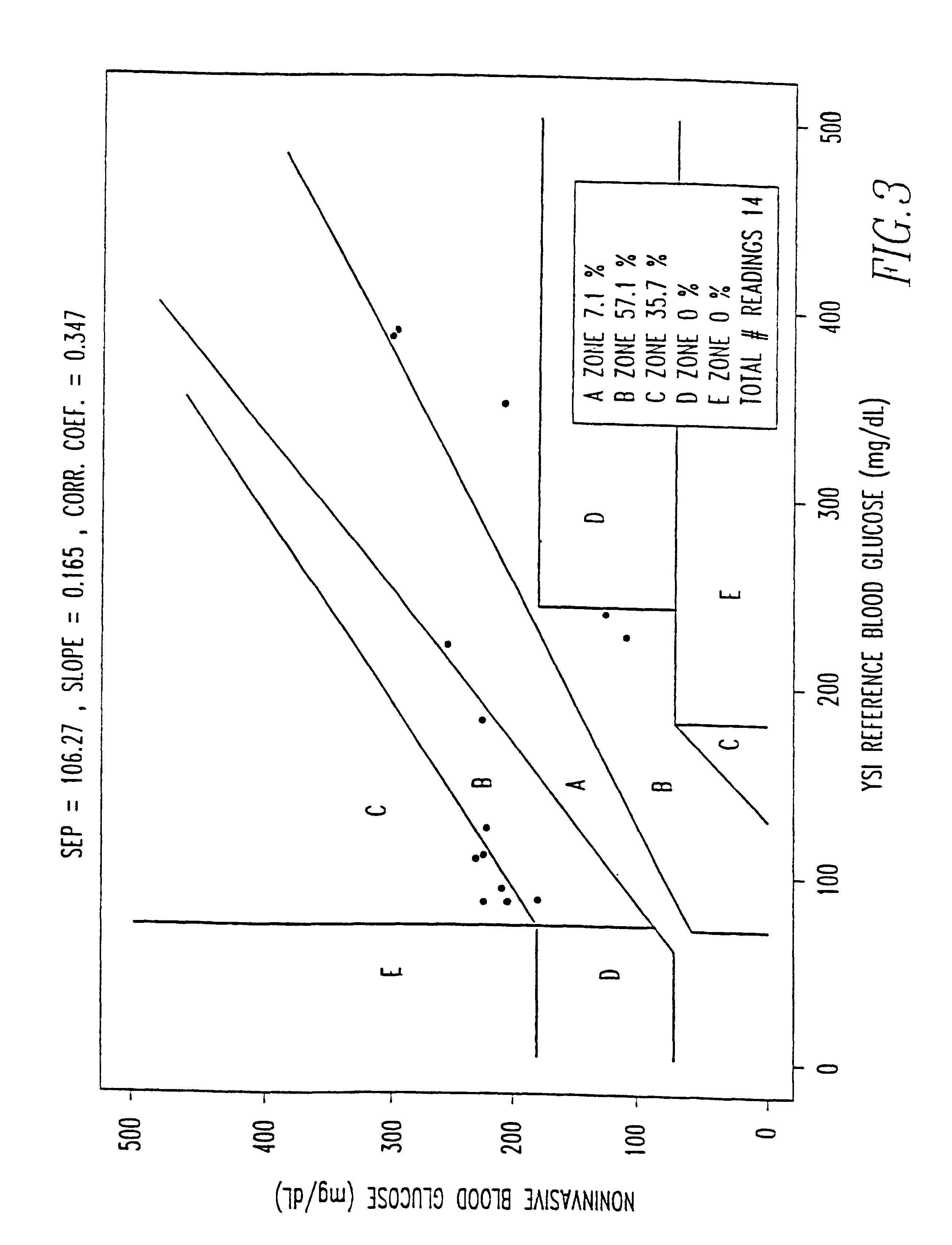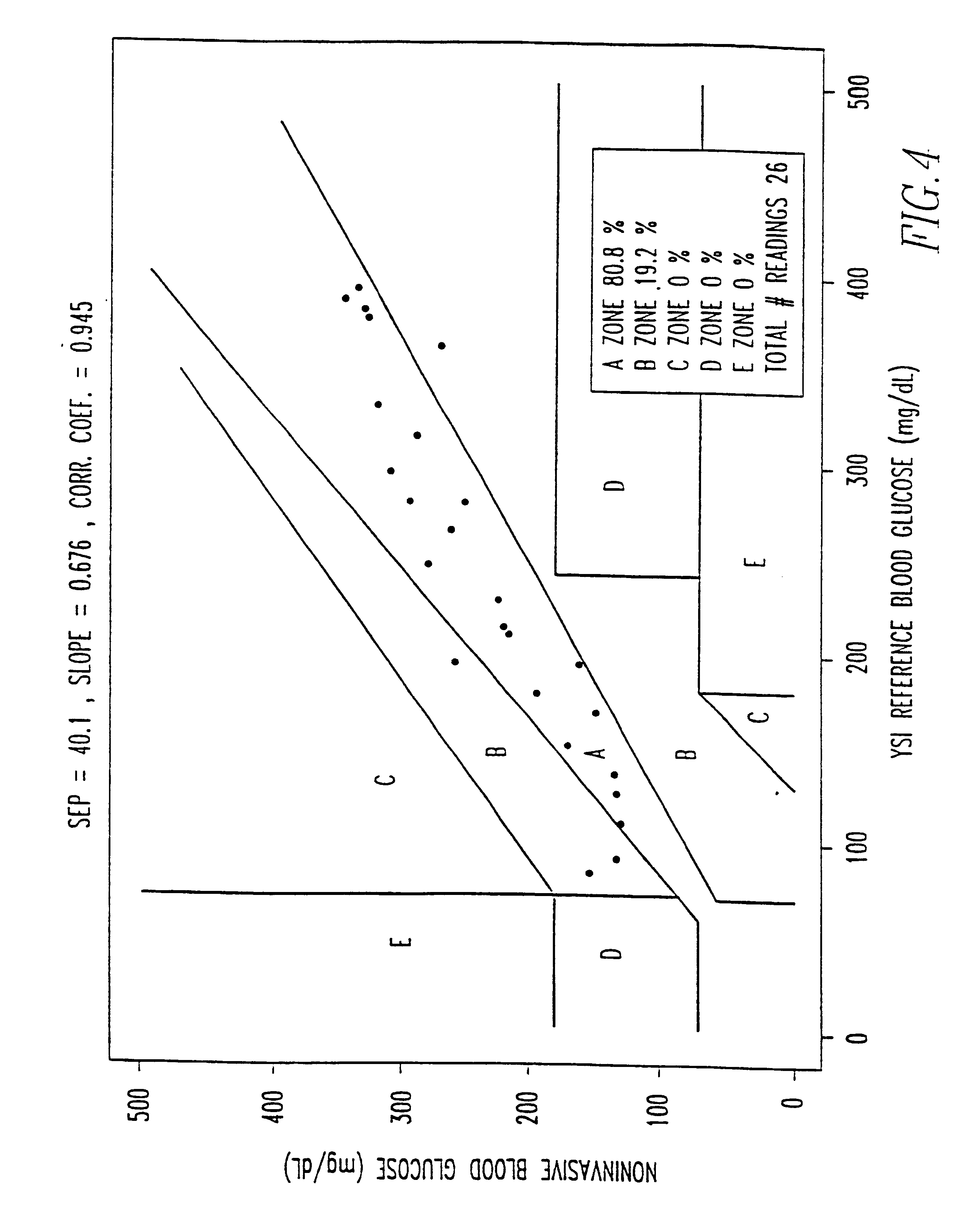Individual calibration of blood glucose for supporting noninvasive self-monitoring blood glucose
a non-invasive, blood glucose technology, applied in the field of individual calibration of blood glucose for supporting non-invasive self-monitoring blood glucose, can solve the problems of insufficient accuracy of non-invasive glucose determination using these methods, non-invasive technology can maintain, and mathematical models have not yet been shown to be useful for reliable prospective glucose testing of diabetic patient's blood glucos
- Summary
- Abstract
- Description
- Claims
- Application Information
AI Technical Summary
Problems solved by technology
Method used
Image
Examples
Embodiment Construction
FIGS. 5-7 describe how data is collected and evaluated. While different analytical methods may be employed, the following are example mathematical analysis methods for the steps described in FIGS. 5-7:
Skin Level Threshold Check
The purpose of the skin level threshold check is to detect an open probe in the noninvasive monitor. For each skin spectra, the skin level threshold check is performed as follows:
1. Using a selected pixel, for example, pixel 13, compute a normalized floating-point pixel value P.sub.NORM in the range [0, 1].
2. If P.sub.NORM is in the range [0.3, 0.95], then accept the skin spectra. Otherwise, discard the skin spectra, increment the count of bad skin spectra and recollect the skin spectra at the same arm position.
3. If the total bad skin spectra count reaches five in a single session, reject the entire session.
Reference Ratio Check
The purpose of the reference ratio check is to detect a dirty probe on the monitor. In a session, skin spectra are bounded by two ref...
PUM
| Property | Measurement | Unit |
|---|---|---|
| length | aaaaa | aaaaa |
| concentration | aaaaa | aaaaa |
| spectroscopic transflectance | aaaaa | aaaaa |
Abstract
Description
Claims
Application Information
 Login to View More
Login to View More - R&D
- Intellectual Property
- Life Sciences
- Materials
- Tech Scout
- Unparalleled Data Quality
- Higher Quality Content
- 60% Fewer Hallucinations
Browse by: Latest US Patents, China's latest patents, Technical Efficacy Thesaurus, Application Domain, Technology Topic, Popular Technical Reports.
© 2025 PatSnap. All rights reserved.Legal|Privacy policy|Modern Slavery Act Transparency Statement|Sitemap|About US| Contact US: help@patsnap.com



